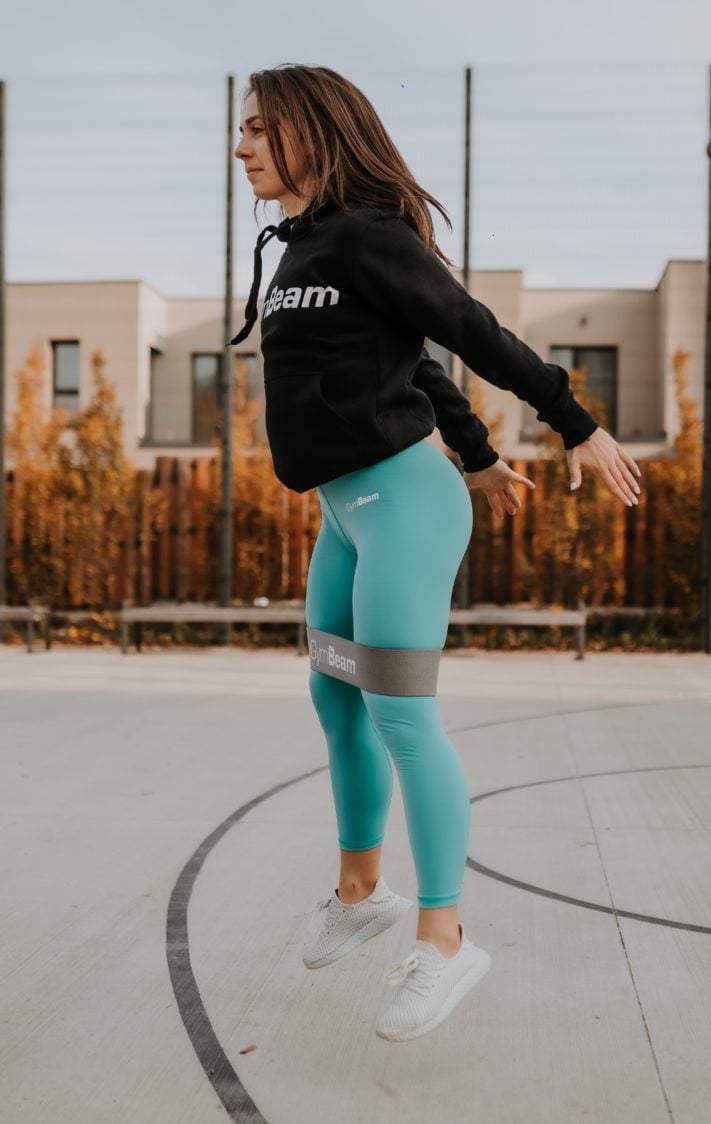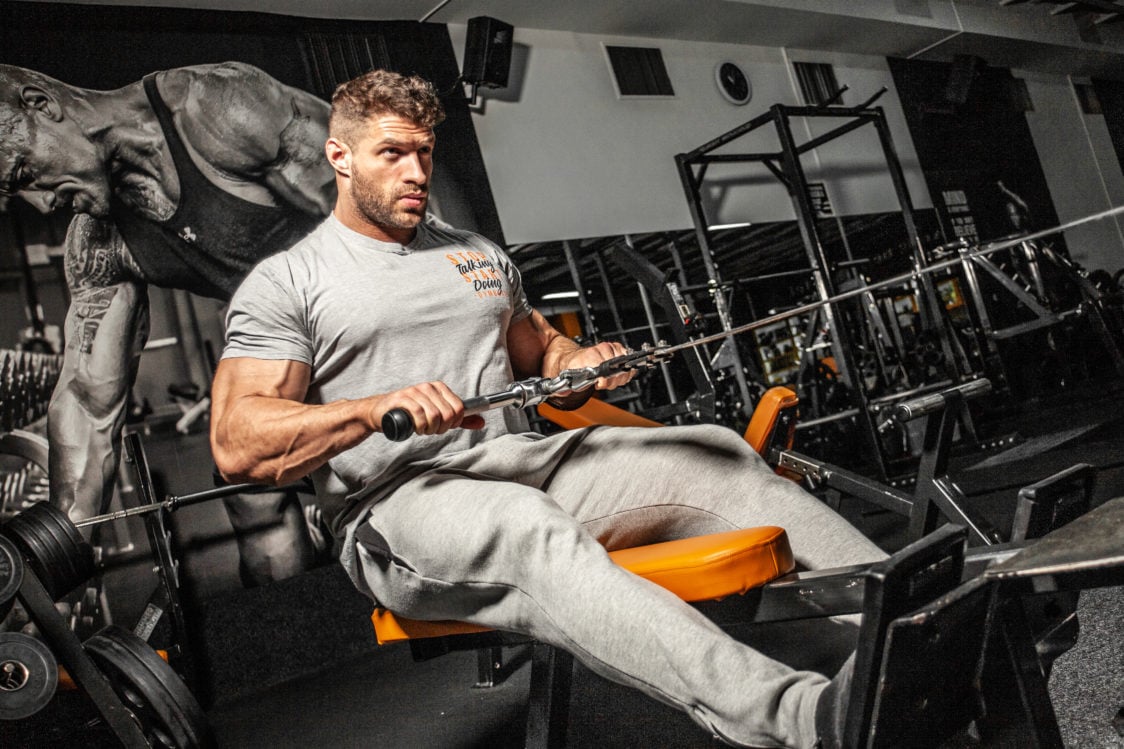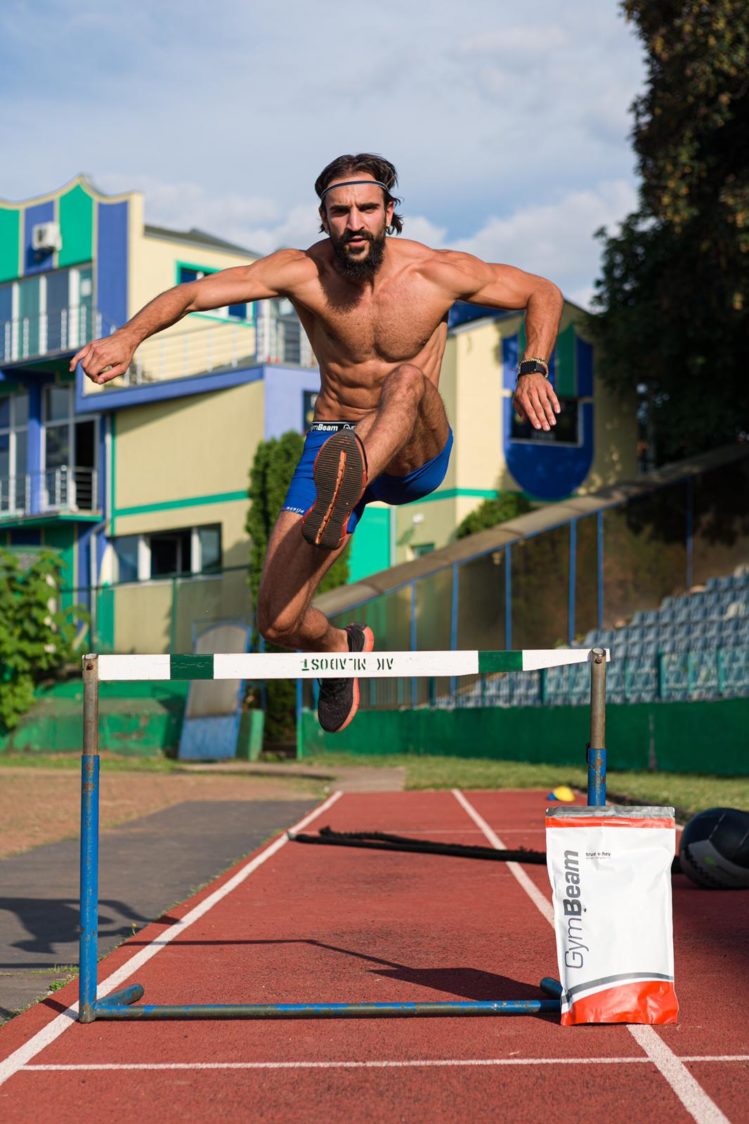Table of Contents
Every day we take of about 20,000 breaths. If you are an active person, it is quite possible that this number will hit the limit of up to 50,000. In terms of numbers, there are thousands of liters of air that pass through your lungs every 24 hours. Even as you read these lines, your lungs work hard to expel up to 70% of your body’s waste in the form of gases, such as carbon dioxide. [1]
Despite these fascinating numbers, people tend to unknowingly ignore proper breathing when exercising. Usually, during training, most people focus on keeping the number of reps, checking off each completed set of exercise in the minds, or looking at a smartwatch or smartphone feeling happy that they have the last kilometer left until the end of the run. But somehow proper breathing does not seem so important.
The good news is that with a little practice, everyone can learn to breathe correctly. In this article, you will learn everything you need to know about correct breathing during exercise, and reasons why it is crucial.

How does breathing work during exercise?
Describing the complete course of breathing is quite complicated and less important for our purpose, so I will mention the most important facts. To understand the basics of breathing, it is sufficient to know that when air is inhaled through the nose or mouth, it gradually passes through the trachea and lungs and hundreds of millions of small lung chambers, called alveoli. They are like small “containers” that help separate oxygen from carbon dioxide. Gas exchange takes place in the millions of alveoli, and inhaled oxygen moves from there further to the heart, brain and other muscles, and carbon dioxide, which we exhale with the help of red blood cells. As I indicated in the introduction, this process is repeated 17,000 to 25,000 times a day in an adult, mainly depending on physical activity and lifestyle. [1-2]
Thus, with each breath, you receive the oxygen that the body unconditionally needs to function. The more you move, the more oxygen you need, which increases the level of carbon dioxide in direct proportion. With a larger amount of this gas in the blood, the number of hydrogen ions also increases, which is reflected in a slight decrease in the pH of the blood. I mention this because it is the lower pH during physical activity that is associated with more intense breathing. [3]
The main cause of shortness of breath during sports is therefore the need for oxygen, but also the effort to remove carbon dioxide from the body. The air you breathe during exercise is (only) approximately 21% oxygen and up to 78% nitrogen together with trace amounts of helium or hydrogen. Your lungs then take care of exchanging about 4 to 5% oxygen for carbon dioxide, which is then exhaled. [4-5]
Exercise and respiratory system
My neighbour has made a resolution to start with running. I knew he was a heavy smoker, so when I asked why he was doing it, I knew the answer in advance. He replied laconically and with a smile that he wanted to stretch his lungs. However, regular training will not increase the volume of the lungs, if that was the case, everyone would certainly add at least a few extra workouts a week to their schedule.
However, what you can do for yourself and what’s much more important is that exercise increases the efficiency and effectiveness of the respiratory system, and the more efficiently the body delivers oxygen to the muscles through proper breathing, allowing you to work harder and have fewer difficulties on your way to goals. At the same time, exercise increases the capacity of the lungs, and thus the total amount of air that the lungs can hold. This is one of the main reasons why proper breathing should be an integral part of your training.
But let’s take a closer look at why this is so. The average person’s lungs move about 0.5 liters of air with a calm breath. In more energetic exercise, such as running, this value can jump up to 6 times, i.e. to 3 liters, with the capacity of the lungs in a healthy adult being around 6 liters and decreasing with age. Therefore, it is clear that being able to work with breath while exercising can play an important role in your training plan. [6-8]

Do you use a diaphragm? You should!
With each inhale and exhale, the volume of the lungs changes, changing the position of the thoracic spine, ribs, pelvis or shoulders. Therefore, you need to realize that how you breathe will also affect how difficult your training will be. For example, the very well-known side stitches while running, usually under the right lower rib, are caused by improper use of the diaphragm and its cramping.
The diaphragm is a muscle located below the lungs, between the chest and the abdominal cavity. It has a dome-shape and should play a dominant role in the breathing process. However, some factors, such as stress or poor posture, cause many adults to not engage the diaphragm in the breathing process, which is bad. In this case, the breathing is shorter and shallower because this process takes place only in the chest. Heart rate, along with blood pressure, rises more intensely, and you will feel the consequences of incorrect breathing especially during more intense training. The body will not be able to supply as much oxygenated air as it needs. If you’ve ever seen a man gasping for breath right after running to a bus stop, now you know what could be one of the causes.
Diaphragmatic breathing has advantages that you will definitely appreciate during exercise:
- helps ensure enough oxygen to the muscles, delaying fatigue and exhaustion
- reduces the speed and intensity of breathing, which saves energy
- contributes to ensuring the activation of the deep stabilization system (core)
- helps prevent abdominal cramps and unpleasant side stitches [9]
What is VO₂ Max and what role does it play?
Before focusing on proper breathing technique while exercising, it is helpful to get familiar with what oxygen consumption means. Therefore, let’s talk about the indicator VO₂ Max, which expresses the maximum amount of oxygen that the body can use during activity. It is true that the higher this value, the more efficient your body is, the more it can delay the onset of fatigue, and thus improve performance. Therefore, it should be easier to breathe while running. In short, VO₂ Max can be defined as an indicator of performance.
VO₂ Max is most often measured while walking or running on a treadmill and is calculated as oxygen consumption in milliliters per minute per kilogram of body weight. The fitness level, age or gender play an important role. Men usually have a higher value of oxygen consumption than women.
The lungs work similarly to phone batteries. Compared to older generations of batteries, modern ones charge faster and last longer because they have a higher energy density. You should also know that after the thirtieth year of life, VO₂ Max decreases by about 2% a year. However, you can still do enough with exercise to keep at least the average VO₂ Max, which is around 45 mL/kg/min for active adult men and about 35 mL/kg/min for women. [10-11]
Should you inhale air through the nose and exhale through the mouth?
Anyone who has tried any aerobic training with a higher intensity knows that breathing through the nose is very difficult at levels attacking the maximum of heart rate. Why is that so? The capillaries of the nasal cavity act as a filter against allergens and bacteria, while mucus from the cavities also helps to capture particles. The nasal passage heats the air and helps to moisturize it through the mucosa.
Moreover, because the nose is a natural filter, you can inhale more air through your mouth at once, which is also the reason why many people instinctively breathe through their mouths during exercise. Nasal breathing does not have a significant effect on maximum performance, but it can be useful for slowing down the speed of breathing, which you will especially appreciate during yoga and relaxation exercises, which aim to improve overall mobility and relaxation of the body. But we will get to that in a moment.
More important than nasal or oral breathing are the frequency and length of the overall inhale. It was already mentioned why it is important to breathe through the diaphragm during exercise, so let’s just add that fast and shallow breathing through the chest can lead to dizziness, feelings of weakness, and the like in addition to weaker performance. [12]
How to breathe while exercising?
Deep breaths can lower your blood pressure, increase relaxation, and may even play a role in how the body breaks down sodium. On the contrary, breathing very quickly causes the increase in heart rhythm, the level of carbon dioxide and lactic acid.

In the beginning, it may be more difficult to focus on proper breathing during exercise, but if you automate this process, it will help you eventually to:
- reduce the amount of air you need during exercise for inhaling and exhaling
- reduce carbon dioxide production
- improve blood circulation and heart health
- increase efficiency in training, and thus achieve better results
- burn fat more efficiently [13]
You might be interested in these products:
1. Aerobic activities / running
Studies confirm that the right breathing technique plays a very important role in finding the optimal running form and long-term satisfactory pace. As pressures caused by gravity are exerted on the diaphragm and surrounding organs during the run, it is very important to synchronize the breath with the dynamics of the run. The more consistent the breathing, the more nitrogen you get into the body. This dilates the blood vessels and increases the oxygenated blood flow to the heart to make it work more efficiently.
The ratio of 3:2 is considered optimal, which means that the three running steps with an inhale alternate with the two steps with an exhale. However, there are also people who prefer a balanced ratio of 2:2. Either way, especially in the beginning, it will probably require a slight slowdown in pace in order to achieve greater concentration needed to master proper breathing techniques. After a few running trainings, you should learn to take in more oxygen and get rid of carbon dioxide at the same time. Over time, thanks to better stamina and adaptation of the circulatory system to regular exercise, you will breathe less and your heart rate will decrease with a similar intensity of exercise. Remember, however, that proper breathing and regularity are a priority. Whether you breathe through your nose or mouth, just take it as a bonus. [14-15]

2. Strength training
You might already know how to properly breathe during strength training. I assume that you have already heard about the concentric and eccentric phases and that in the first of them the air needs to be released from the lungs and during the second you can (again) inhale properly. Breath control during strength training can help you lift more weight and develop more strength with less effort.
Let’s illustrate this with one of the most basic exercises – squats. Inhale in the eccentric phase, just when you squat down. And then exhale in the concentric phase as you extend your legs back to the starting position. Unless you are trying to exceed your current weight record, and you are not one of the strongmen, such as Hafþór Júlíus Björnsson or Petr Petráš, who train almost at the limit of human possibilities and break crazy records, you should definitely avoid holding your breath. It is a common mistake that can cause you to have high blood pressure, which almost goes hand in hand with dizziness or nausea. That will definitely not support your efforts to achieve the set goals in the gym. [13] [16]
3. Yoga/stretching
You have probably already seen the image of Tibetan monks in the films. They spend many hours devoting themselves to yoga, absolutely immersed in their thoughts. Yoga has become a way of life for many people today. Extra long inhales and exhales are best during such activities.
The reason is simple. Longer and deeper breaths, along with exhalations, can help you amplify the range of movements and, as I have indicated, contribute to a better perception of your own body. If you stop breathing during pre-workout stretching, your body will be tense and simply block itself, preventing you from stretching and increasing blood flow to the muscles. On the contrary, regular and prolonged breathing will relieve tension and help you work better with your body. For stretching or yoga, inhales/exhales of 4 to 5 seconds or longer are recommended.

4. High Intensity Interval Training / HIIT
With this type of training, especially at the beginning, it can easily happen that you lose your breath suddenly and quickly. If you do high-intensity sit-ups for three-quarters of a minute, you are probably already breathing through mouth at the end of the first set to cope with the oxygen deficiency as effectively as possible. However, know that this actually reduces the level of carbon dioxide in the blood and inhibits the body’s ability to release oxygen into the cells. Controlling your breathing and pace is also important during HIIT training. If you’re short of breath, slow down a little until you can continue again. It is important not to overestimate your strength and to estimate it correctly so that the short phases of sprints, squats and other exercises do not alternate with the endless phases of rest.
According to a 2017 study, the athletes who have mastered meditation can have an advantage doing HIIT. It was found that those who meditated regularly knew how to work better with the breath, and therefore they had more control over it even during high-intensity interval training. [17]
What is the lesson to learn?
Exercise improves and supports respiratory muscle performance, and the more efficiently, thanks to proper breathing, the body delivers oxygen to the muscles, the more you can focus on training. It does not matter whether it’s about running, strength training or yoga. Believe that whatever your training goal is, proper breathing can affect your training and move it up to the next level.
Keep in mind that diaphragm breathing during (and not only) exercise has undeniable benefits; provides more oxygen to the muscles, reduces the speed and intensity of breathing, thus saving energy and, last but not least, helping to prevent abdominal pain or unpleasant side stitches.
The next time you exercise, don’t just think about the number of reps and sets or the number of kilometers you want to run. Keep in mind how you should breathe. People often can’t see the forest for the trees, which is why the path to the dream goal can be more difficult. If the article has helped you understand how proper breathing can improve your training, and how to breathe during exercise, share it with your friends, so that they could get closer to their training goals.
[1] Elliott Physical Therapy – https://elliottphysicaltherapy.com/importance-proper-breathing-overall-health/
[2] United States Environmental Protection Agency – https://blog.epa.gov/2014/04/28/how-many-breaths-do-you-take-each-day/
[3] National Academy of Sports Medicine – https://blog.nasm.org/the-right-way-to-breathe-during-exercise
[4] National Aeronautics and Space Administration – https://www.grc.nasa.gov/WWW/k-12/airplane/airprop.html
[5] The Breath Effect – https://www.thebreatheffect.com/facts-about-breathing/
[6] Mazic S., and col. – https://journalpulmonology.org/en-respiratory-parameters-in-elite-athletes-articulo-X0873215915339479
[7] Breathe – https://www.ncbi.nlm.nih.gov/pmc/articles/PMC4818249/
[8] Delgado B. J., Bajaj T. – https://www.ncbi.nlm.nih.gov/books/NBK541029/
[9] Jewell T. – https://www.healthline.com/health/diaphragmatic-breathing
[10] Healthline – https://health.ucdavis.edu/sportsmedicine/resources/vo2description.html
[11] Healthline – https://www.healthline.com/health/vo2-max#measuring-vo%E2%82%82-max
[12] Science ABC – https://www.scienceabc.com/eyeopeners/should-you-breathe-through-the-nose-or-mouth-while-exercising.html
[13] Healthline – https://www.healthline.com/health/fitness-exercise/when-to-inhale-and-exhale-during-exercise
[14] Willcockson M. A., Wall-Scheffler C. M. – https://pubmed.ncbi.nlm.nih.gov/22217570/
[15] Wheatley J. R., Amis T. C., Engel L. A. – https://pubmed.ncbi.nlm.nih.gov/1778924/
[16] Lockridge R. – https://barbend.com/petr-petras-raw-powerlifting-total-record/
[17] Rooks J. D. – https://link.springer.com/article/10.1007/s41465-017-0016-5


Add a comment